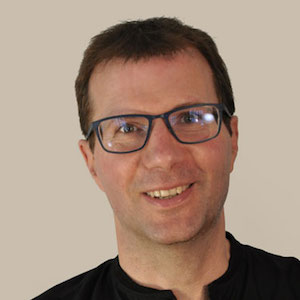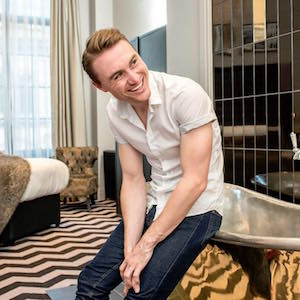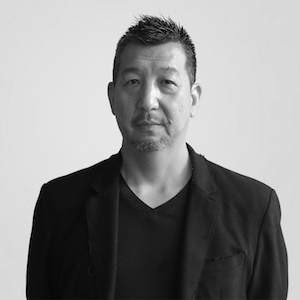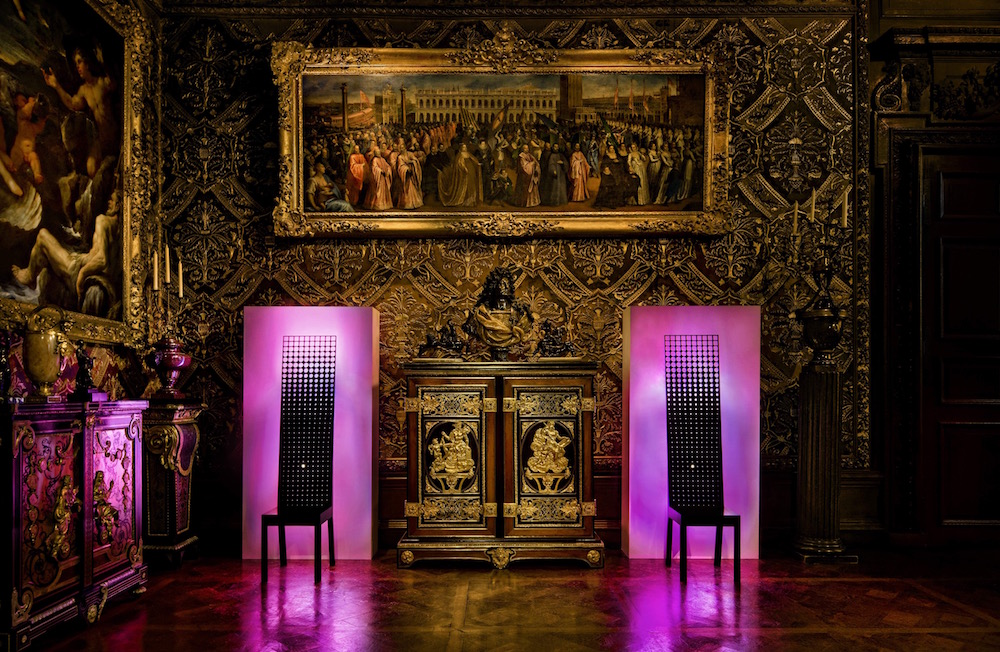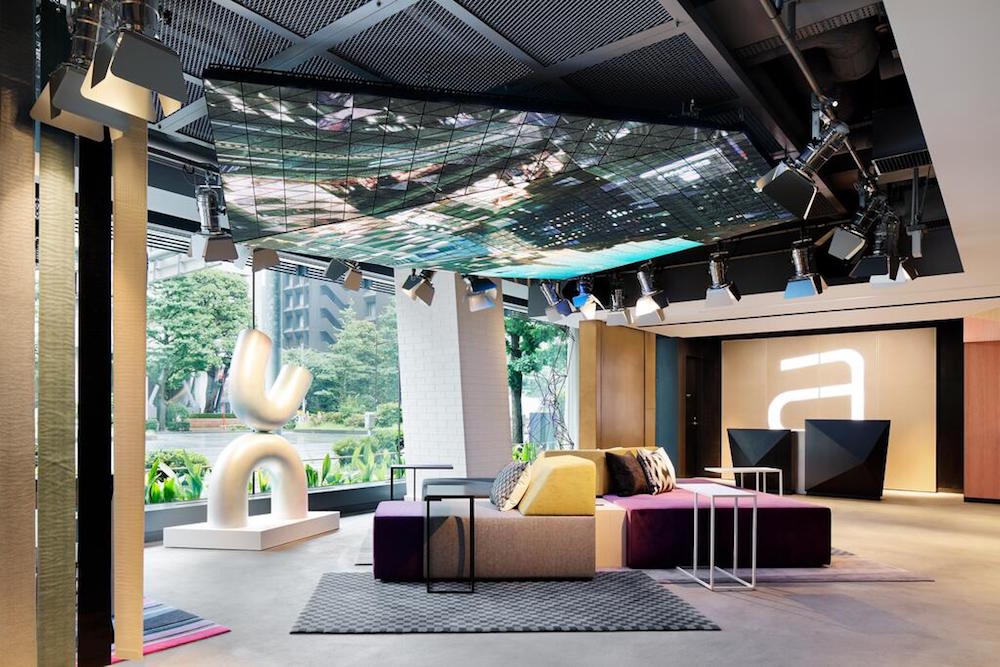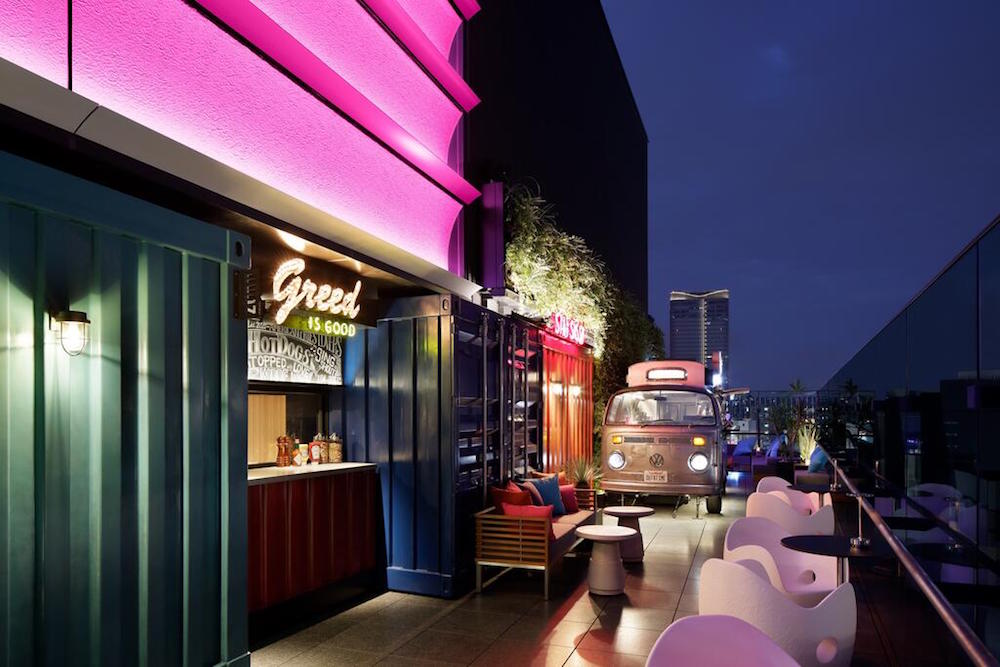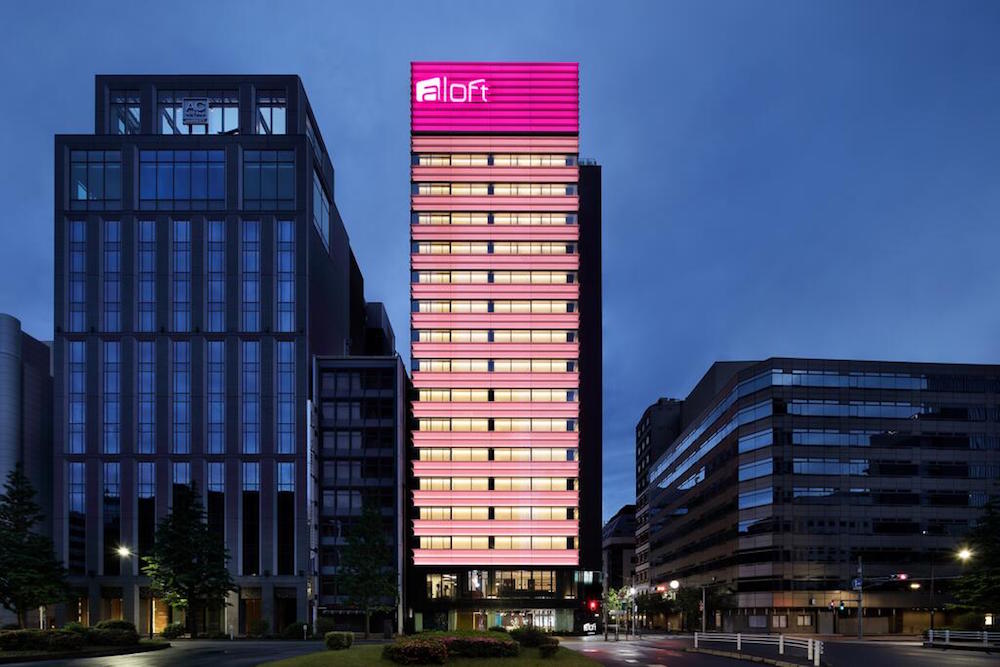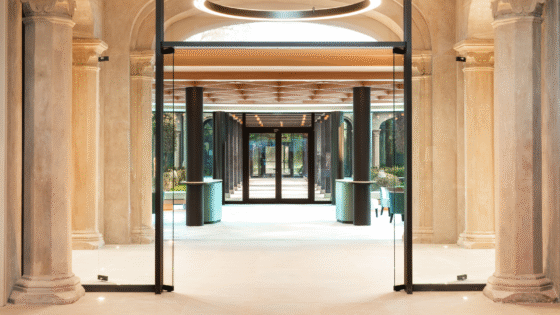Following a number of recent roundtables where lighting was unintentionally put under the spotlight, Hotel Designs collaborates with innovative lighting expert Moritz Waldemeyer and a number of designers to understand lighting’s role in tomorrow’s hotel…

There is arguably no one in the industry who is more dedicated, more aware and more creative in lighting design than Moritz Waldemeyer.
As well as working with a number of hotels to create powerful installations, the lighting guru has designed LED ‘couture’ pieces for music icons such as Ellie Goulding, WillIAm, Take That and Rhianna (to name a few). He has dominated catwalks during collaborations with the likes of fashion design legend Philip Treacy OBE and Versace.
Just when we thought Waldemeyer had found his rhythm, he surprised us yet again by unveiling a fresh and innovative lighting scheme for Bentley Motors, which magnificently went on display to mark the car company’s 100-year anniversary.
So, when curating an exclusive virtual roundtable on ‘lighting solutions for tomorrow’s hotel’, it felt only fitting to collaborate with the LED master himself. To help Waldemeyer and I shed light on this heavily debated topic, we invited a handful of leading designers and consultants from around the world to join the conversation…
On the panel:
- DESIGN: Marie Soliman, Co-Founder and Creative Director, Bergman Design House
- Hayley Roy, Founder, Harp Design
- Asao Nakayama, Founder, W Design International
- Moritz Waldemeyer, Founder, Studio Waldemeyer
- Gabriella Callinan, Interior Design Manager, Marriott International
- Neil Knowles, Creative Director, Elektra Lighting
- Hamish Kilburn, Editor, Hotel Designs
- Atushi Kaneda, Founder, Worktecht Lighting Consultants
“For me, the advancements in LED has been the enabler to what lighting designers have been able to achieve in recent years.” – Moritz Waldemeyer, Founder, Studio Waldemeyer.
Hamish Kilburn: When did lighting become more than just a decorative accessory in hotel design?
Neil Knowles: Lighting has always been important, but in my career, it has taken off from being created by lighting engineers to now being designed by lighting specialists. For me, that is the key difference. Lighting used to be very uniformed and efficient, and slowly we have evolved to make it more theatrical.
Hayley Roy: Guests’ expectations have changed, and they now expect lighting to create an experience. This, I believe, has happened in the last 20 years with guests valuing what interior designers do more.
Moritz Waldemeyer: About 20 years ago I was working as a research scientist for Phillips. I remember looking at a graph about light output for LEDS. It was a revolutionary piece of tech that would half lighting costs. For me, the advancements in LED has been the enabler to what lighting designers have been able to achieve in recent years.
- Image credit: LED Christmas tree, designed by Moritz Waldemeyer, inside Nobu Shoreditch
- Image credit: Moritz Waldemeyer/Chatsworth House Trust
Marie Solimen: Our lifestyles have changed massively in the last 20 years. I believe that guests were acknowledging design before, but all of a sudden, we were able to capture these moments with the evolution of social media. People started realising the impact and drama lighting can have in a space.
Six years ago, I saw it change. The lighting designer’s role became more significant and there was definitively a rise in the use of colour, which was driven largely by social media.
HR: The industry has realised for some time now that they are certain projects where you absolutely need to bring in a lighting consultant, because lighting is such an integral element to get right in an interior design project
Asao Nakayama: In Japan, we had a massive lifestyle change just before the millennium. At that time, wellness became a dominant consumer demand for travellers.
HK: Japan is a great example of a destination where technology and wellness can work in harmony with one another. How do you find the balance?
Atushi Kaneda: Japan manufactures a lot of high-tech products, but in places it is lacking good and meaningful design. The end user, in many, circumstances is more sophisticated than the designer.
HK: Asao and Atushi, you have recently worked together to design Tokyo’s debut Aloft hotel. Can you tell us more about the lighting scheme in this hotel?
AN: The hotel, both interior and exterior, has been designed to challenge conventional lighting design. The concept was to create a “hotel that wears light” in the city, with the exterior being inspired by ‘Japanese lanterns’.
- Image credit: Aloft/Marriott International
- Image credit: Aloft/Marriott International
- Image credit: Aloft/Marriott International
AK: The Interior space is dramatic. We specifically designed the public areas with the aim to create a strong 70s vibe. To achieve this, we used a new LED technology to ensure the lighting was the best quality.
What’s more, the lighting in the hotel can be changed easily with the idea being that the lighting scheme within the hotel will be unique to the seasons. It’s a subconscious change for the guests but one that we believe will enhance their experience.
HK: Let’s talk about personalisation. Will all hotels, like Aloft Ginza Tokyo soon shelter this ability to personalise lighting, and can you see this technology being utilised in all guestrooms in the future?
GC: I love that idea, but being a realist I just don’t think that every hotel within the Marriott brand at least would be able to utilise this concept to its potential. [As designers], we can only control so much in regards to training of staff, for example. There are certain properties worldwide that are more suited to this style of tech hotel.
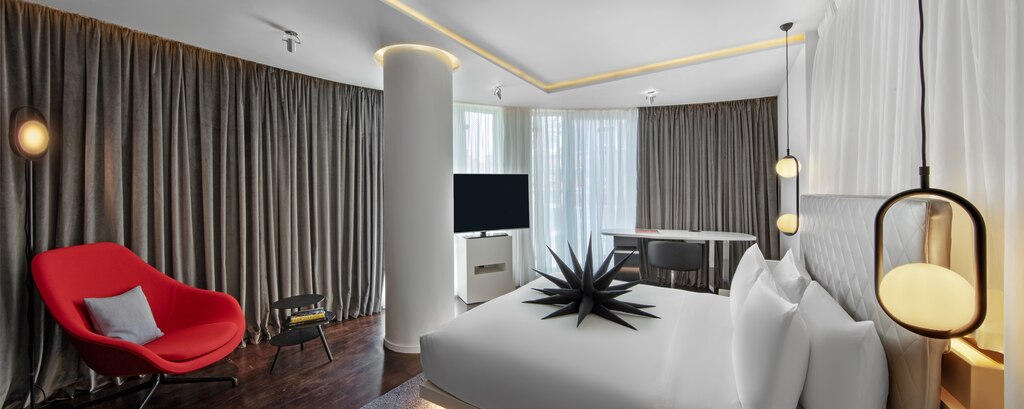
Image credit: W London/Marriott International
“A solid lighting scheme will create a purposeful experience and help the design narrative to unfold.” – Marie Soliman, Co-Founder and Creative Director, Bergman Interiors.
HK: Marie you are working on projects that will open years from now, and I assume that you are trying to take technology to its limits within the boundaries of wellness. What is lighting’s role in these projects?
MS: Lighting for us is a huge part of what we do. Once we have a project, we immediately speak to a lighting designer.
First of all, lighting enhances the whole experience within a hotel, and secondly it creates memories. A solid lighting scheme will create a purposeful experience and help the design narrative to unfold. We can achieve this by playing with light and colour.
Typically, hoteliers want guests to feel at home, and naturally comfortable. One area that is very interesting to explore is circadian rhythm, and understanding how we can change how areas feel throughout the day.
“We are now focusing more on creating that warmth of hospitality and not the ‘wow factor’.” – Gabriella Callinan, Interior Design Manager, Marriott International.
HK: Gabriella, Marriott International is a hotel group known for its research when it comes to lighting and sound. What innovations have you seen recently?
GC: Across all 30 brands, we have many different styles of hotels. The guest is savvy and whether they are in a high-end luxury hotel or a cheaper lifestyle property, their demands when it comes to lighting are the same. Today’s guest knows what they want and we have to deliver that.
Today, as well as there being more technology for the guest, we are also able to monitor what elements within our hotels are being used most. We can design the most amazing lobby complete with presets and light levels. However, if it is not being used then that is a poor investment. Sometimes, six months after the opening of a hotel we will return to find that nobody has touched those controls. Perhaps the General Manager or Director of Engineering has left. Practically, we do see this scenario.
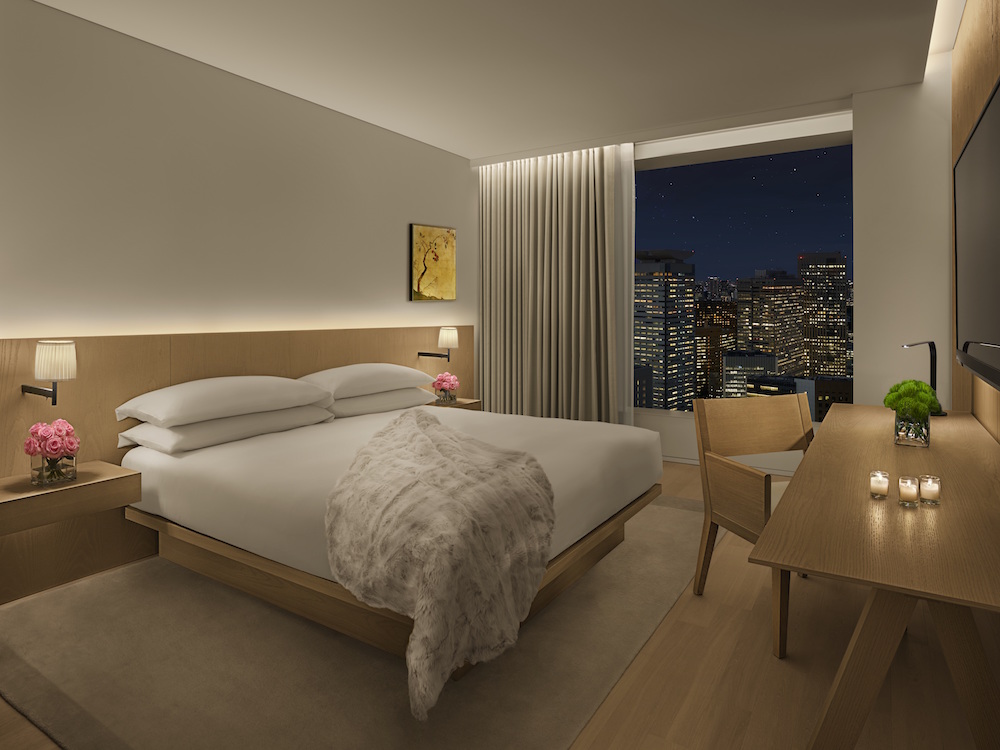
Image credit: Tokyo Edition/Marriott International
Recently, we have pulled back on the ‘wow factor’ and instead given the consumer a simple, clean and effective design. We are now focusing more on creating that warmth of hospitality and not the ‘wow factor’.
We have looked at how lighting can work in loyalty. So in your app, we have looked at giving that customisation without overwhelming guests. It’s difficult to make everyone happy.
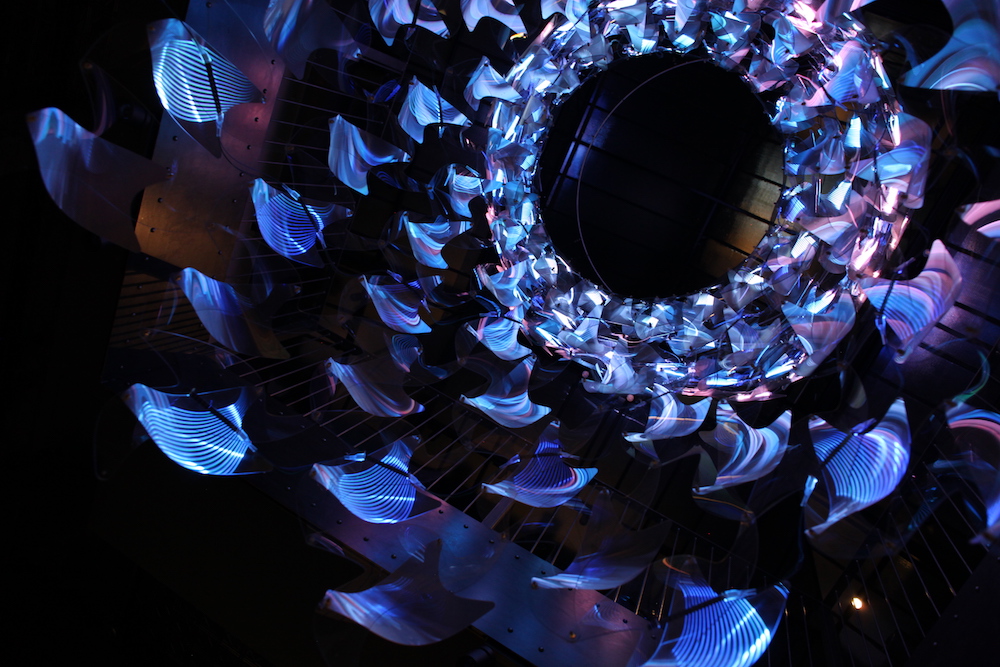
Image credit: Moritz Waldemeyer
HK: Moritz, your studio straddles between design, fashion and other industries. What advantages does that give you?
MW: One thing we like to do in the studio is jump from one industry to another and bring something from an previous experience. We regularly bring together design and fashion, for example, which always takes our projects to a new level. I think that universal curiosity gives a real advantage when approaching a new challenge – and it is that magical connection that allows us to breathe fresh life into projects.
“If the idea is strong then you have a greater chance to create something timeless.” – Moritz Waldemeyer, Founder, Studio Waldemeyer.
HK: Fashion is short shelf life, do you see some of your designs being more long-lasting?
MW: At the studio, we try to use technology to create our own electronics and circuit boards, but it’s important that the idea stands out and is the driver of any project we are working on. If the idea is strong then you have a greater chance to create something timeless. It has to be idea-driven and not tech-driven.
HK: Marie, what’s lighting’s role in fitness?
MS: Lighting is so important in a wellness and fitness setting, and our studio has been able to pioneer new fitness spaces by utilising lighting. We found a formula that allowed lighting to enhance overall performance.
In a hotel, you want to give a warm welcome but in a HIIT studio, for example, you want to bring the energy up! We designed a new boutique rowing studio called the Engine Room. To really make the design work, we connected the ceiling lights, which were deliberately designed as arrows, to work in sync with the user rowing. All of a sudden, the light was enhancing the performance.
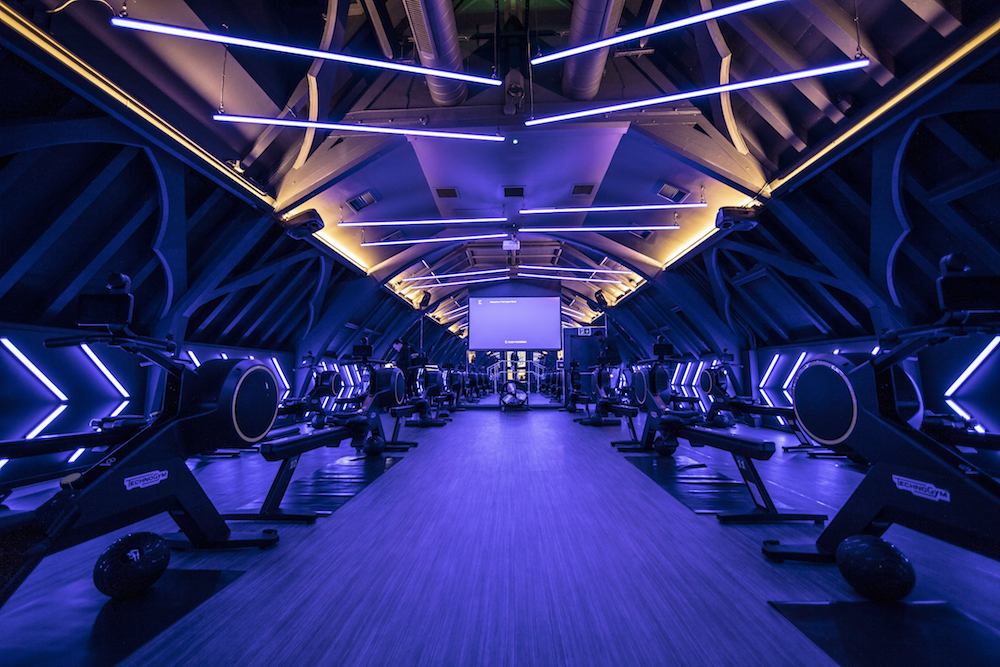
Image credit: The Engine Room, designed by Bergman Interiors
We have also recently worked with Accor to replace that one-size-fits-all mentally when designing fitness spaces. The environment we designed inside Pullman Power Fitness is bold and offers much more than just a gym. We want guests to feel the vibe. The idea is that our guests – their bodies – are the art. It’s all inspired by fashion and how your body is a sculpture.
HK: Do you think we are missing a trick in lighting F&B spaces?
HR: No, I don’t think we are. Every design we do is tailored to the client. At an entrance, the wow factor is there – you want that! When you walk into the F&B experience it is normally about bringing that mood into that F&B area. It’s really important to bring drama but you do this in a different way and in more of a subtle manor.
NK: It’s really important to remember, especially in F&B areas, good lighting design shouldn’t be noticed. It’s about setting an appropriate mood and not always about creating a statement.
HK: What lighting trends should hotels avoid in the future?
GC: It was trends – and still is for some people – to create that moody experience; to dim the lighting and mute the space. Although that may look appealing, you have to understand how that space would then function during all times (day and night). So we asked our guests across different brands what they thought. What was interesting was that the response – especially amongst women – was that travellers actually felt unsafe.
While you’re here, click here to read our exclusive panel discussion on the role of UV Lighting in a post-pandemic world.
In conclusion to this panel discussion, new LED technology and software is allowing designers and consultants to utilise lighting when finding new, innovative ways to enhance the guest experience and cater to new demands of modern travellers. However, like all elements in international hotel design, lighting scheme concepts should not be dictated to by trends. Instead, in order to find the right balance – and to create a timeless statement and/or ambiance – it is wise to collaborate with a credible lighting designer/consultant.
If you would like to have your say about lighting solutions for tomorrow’s hotels, please Tweet us @HotelDesigns. A special thanks to Studio Waldemeyer and our expert panellist for joining the conversation.






